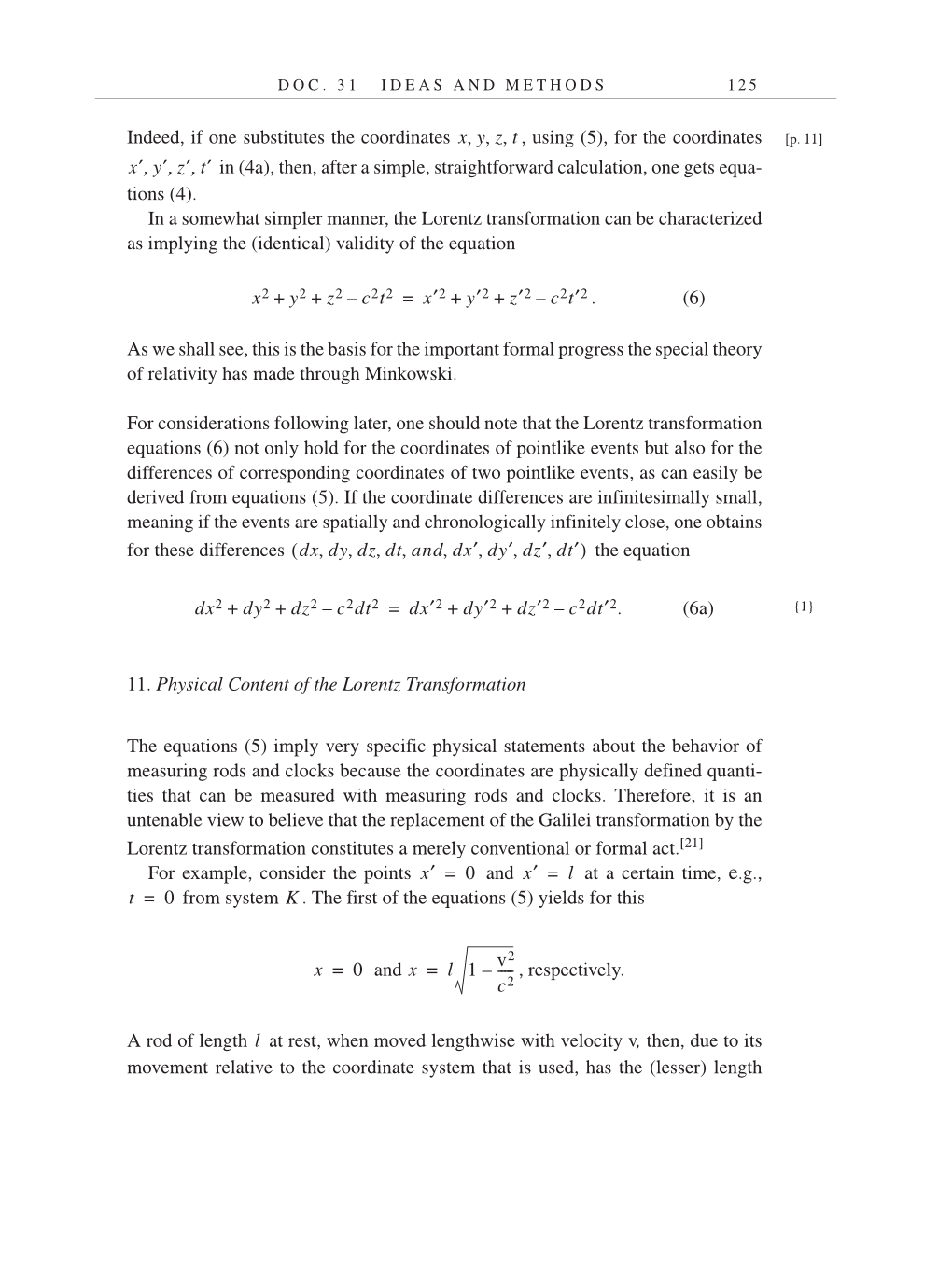D O C . 3 1 I D E A S A N D M E T H O D S 1 2 5
Indeed, if one substitutes the coordinates , using (5), for the coordinates
in (4a), then, after a simple, straightforward calculation, one gets equa-
tions (4).
In a somewhat simpler manner, the Lorentz transformation can be characterized
as implying the (identical) validity of the equation
. (6)
As we shall see, this is the basis for the important formal progress the special theory
of relativity has made through Minkowski.
For considerations following later, one should note that the Lorentz transformation
equations (6) not only hold for the coordinates of pointlike events but also for the
differences of corresponding coordinates of two pointlike events, as can easily be
derived from equations (5). If the coordinate differences are infinitesimally small,
meaning if the events are spatially and chronologically infinitely close, one obtains
for these differences the equation
(6a)
11. Physical Content of the Lorentz Transformation
The equations (5) imply very specific physical statements about the behavior of
measuring rods and clocks because the coordinates are physically defined quanti-
ties that can be measured with measuring rods and clocks. Therefore, it is an
untenable view to believe that the replacement of the Galilei transformation by the
Lorentz transformation constitutes a merely conventional or formal
act.[21]
For example, consider the points and at a certain time,
e.g.,
from system . The first of the equations (5) yields for this
and , respectively.
A rod of length at rest, when moved lengthwise with velocity v, then, due to its
movement relative to the coordinate system that is used, has the (lesser) length
[p. 11]
x y z t , , ,
x′, y′, z′, t′
x2 y2 z2 c2t2
– + +
x′2 y′2 z′2 c2t′2
– + + =
dx dy dz dt and dx′, , , , , , dy′, dz′, dt′) (
dx2 dy2 dz2 c2dt2
– + +
dx′2 dy′2 dz′2 c2dt′2.
– + + =
{1}
x′ 0 = x′ l =
t 0 = K
x 0 = x l 1
v2
c2
---- - – =
l
